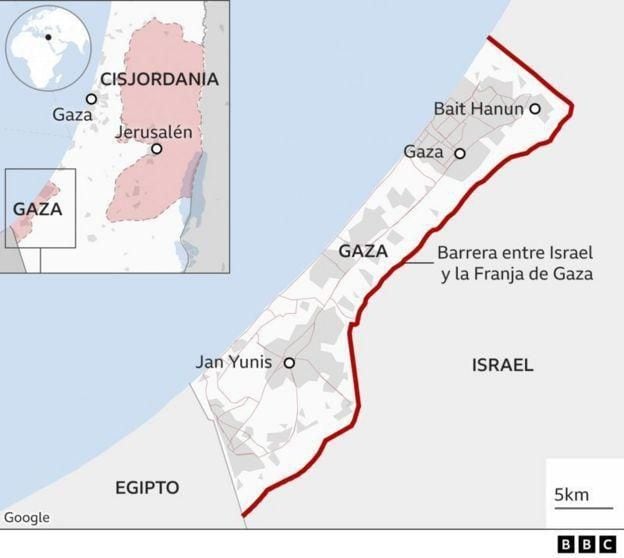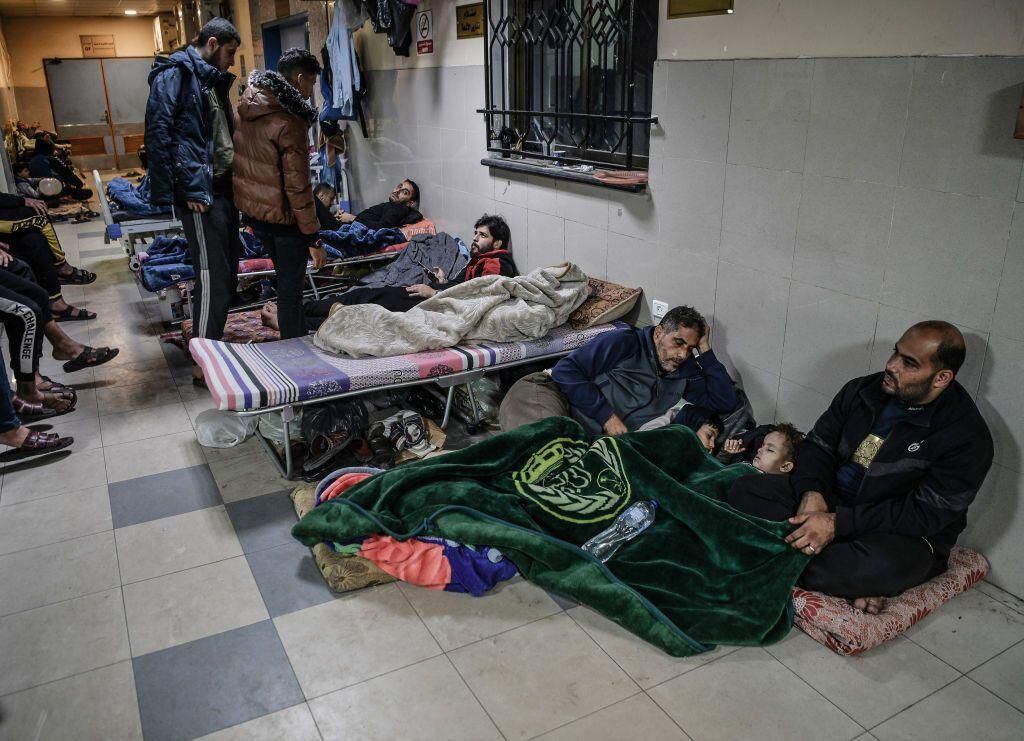The ground forces of Israel They advance towards the south of Gaza after three days of intense bombardment.
Early Israel Defense Forces (IDF) radio reports confirmed that they had launched a ground operation north of Khan Younis.
LOOK: What other wars exist in the world (besides Gaza and Ukraine) and what are the side effects of them attracting less attention
Images verified by the BBC show an Israeli tank operating near the city.
IDF chief Herzi Halevi later told his soldiers that the army is fighting “strongly and intensely” in southern Gaza.
Evacuations and ground attack
Lieutenant General Halevi briefed Gaza division reservists on military targets and the IDF’s assassination of Hamas commanders.
“We fought hard and intensely in the north of the Gaza Strip, and now we are also doing this in the south“he told the soldiers.
An IDF spokesperson later confirmed that Israel “continues to expand the ground incursion” throughout Gaza, in which its soldiers “carry out hand-to-hand battles with terrorists.”

When the week-long truce ended on Friday, Israel resumed a large-scale bombing campaign in Gaza, which residents of Khan Younis described as the most intense wave of attacks yet.
During the seven-day ceasefire, Hamas returned 110 hostages held in Gaza in exchange for the release of 240 Palestinian prisoners serving sentences in Israeli prisons.
On Sunday morning, the Israeli army issued evacuation orders in several districts of Khan Yunisurging the population to abandon them immediately.
Israeli authorities believe Hamas leaders are hiding in the city, which became a refuge for hundreds of thousands of people who fled fighting in the north in the early stages of the war.

“Panic” in a hospital
A UN official described a “level of panic” he had never seen before in a Gaza hospital after the Israeli army shifted the focus of its offensive south.
James Elder of the UN children’s agency Unicef described the Nasser hospital in Khan Yunis as a “war zone“.
An adviser to the Israeli prime minister said the country is making “every effort” to prevent civilian deaths.
Elder, in turn, told the BBC that he heard large and constant explosions near the Nasser hospital and that the children arrived with head injuriessevere burns and shrapnel from recent explosions.
“It’s a hospital I go to regularly and the children now know me; families know me. These same people grab my hand or my shirt and say, ‘Please take us to a safe place.
“Unfortunately, the only answer to this question is that there is no safe place. Not even, as you know, that hospital”, he lamented.

The Hamas-run Gaza Health Ministry estimates that more than 500 people have been killed since bombings resumed, and more than 15,500 since the war began.
Mohammed Ghalayini, a British-Palestinian who remains in Gaza, described the situation in the territory as “beyond catastrophic”.
“People have been enduring the brutal Israeli attack for 50 days or more and have very few resources such as food, water, energy, sanitation and waste management services,” he told the BBC by phone, before the connection was cut.
The environmental pollution expert, who normally lives in Manchester, arrived in Gaza on what was supposed to be a three-month visit to see his mother shortly before the attacks. October 7th.
1.8 million displaced
Israel began its retaliatory bombings against Gaza following Hamas attacks on southern Israel on October 7, in which Islamist militants killed 1,200 people and took 240 hostages.
Since fighting resumed on Friday, rockets have also been regularly fired at Israel from Gaza. A 22-year-old man from the city of Holon, near Tel Aviv, was treated on Saturday for minor shrapnel injuries.
Hundreds of thousands of people have already fled the fighting to take refuge in Khan Younis after Israel told them to abandon the Northern Strip.
The latest UN update indicates that around 1.8 million people are displaced internally in Gaza.
Speaking to the BBC, UN human rights chief Filippo Grandi said that Palestinians in the Gaza Strip are being “increasingly pushed towards a narrow corner of what is already a very narrow territory”.
The IDF began publishing maps of attack areas on the Internet. They say these maps, along with other measures such as phone calls and leaflets dropped from planes over Gaza, will warn people to evacuate.
Speaking on the BBC’s Sunday program “Sunday with Laura Kuenssberg”, Prime Minister Benjamin Netanyahu’s main adviser, Mark Regev, claimed that civilians are not targets and that protecting them is more difficult because Hamas “incorporates its machine of military terror” in residential neighborhoods.
He said the IDF is trying to be “as surgical as possible in a very difficult combat situation” and warn of attacks in advance.
The IDF claims to have destroyed 500 excavations of “terrorist tunnels” used by Hamas in Gaza out of the 800 they say they have located so far.
Regev also noted that since the start of the war, Israel’s air force has carried out around 10,000 airstrikes against “terrorist targets” under the direction of IDF soldiers on the ground.
Source: Elcomercio
I am Jack Morton and I work in 24 News Recorder. I mostly cover world news and I have also authored 24 news recorder. I find this work highly interesting and it allows me to keep up with current events happening around the world.

:quality(75)/cloudfront-us-east-1.images.arcpublishing.com/elcomercio/6RH45RBOU5DN5ADGXTCWHR2TXA.jpg)

:quality(75)/cloudfront-us-east-1.images.arcpublishing.com/elcomercio/BUNML4TQNVHSBOBMY5FC3QEM2M.jpg)

:quality(75)/cloudfront-us-east-1.images.arcpublishing.com/elcomercio/FGNDNEX4V5AKXF6INLTN4FLZUQ.jpg)

